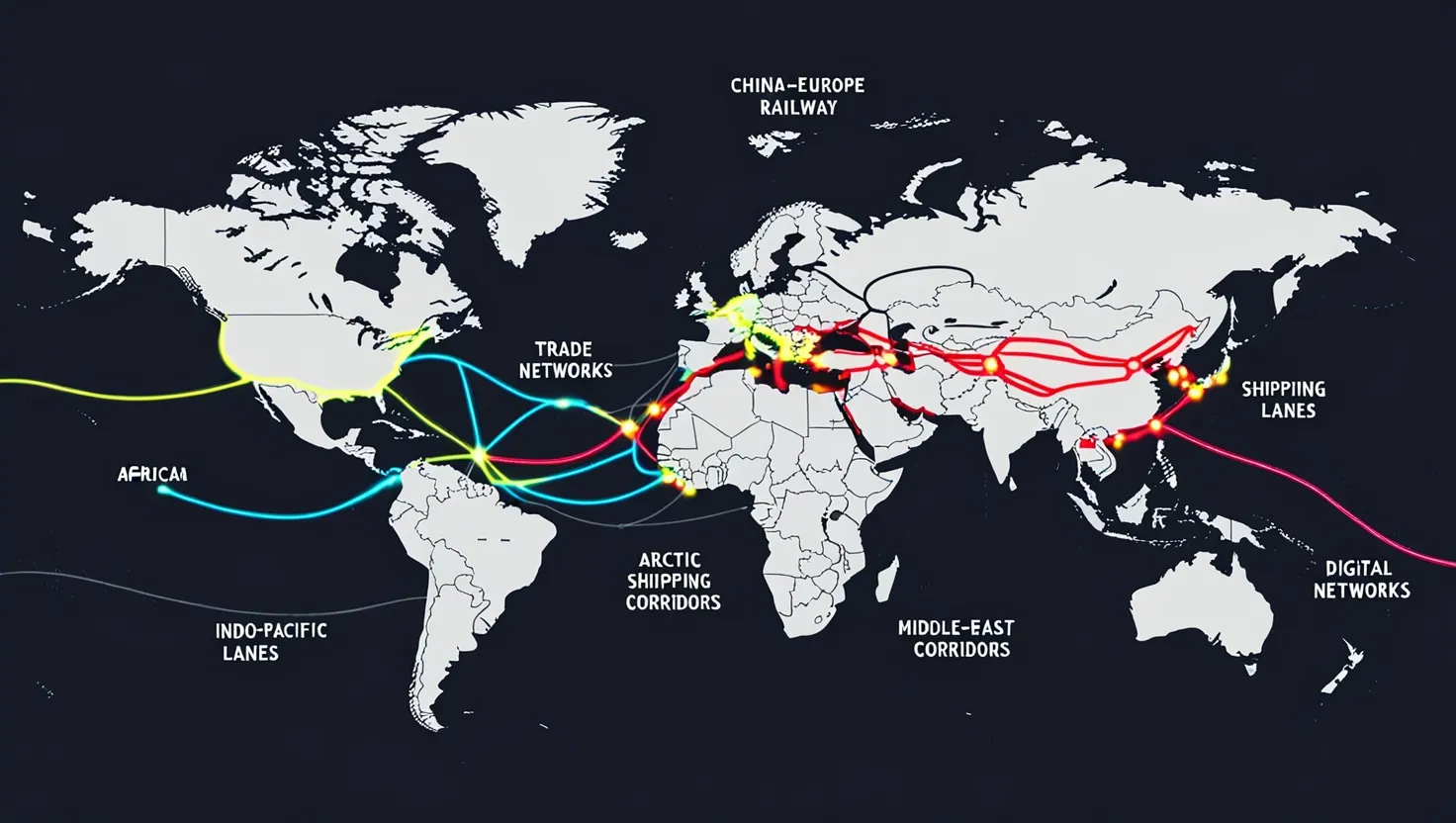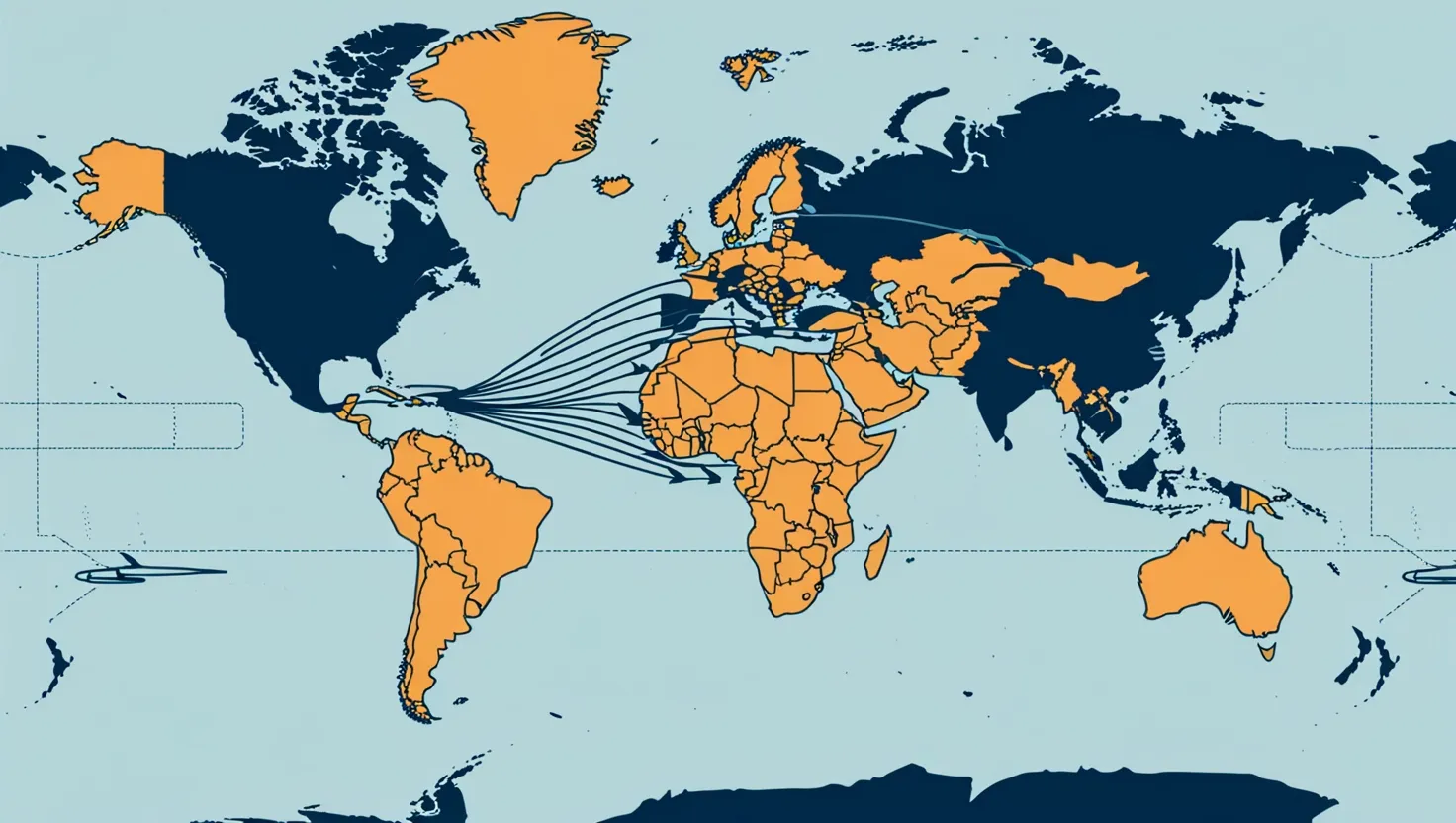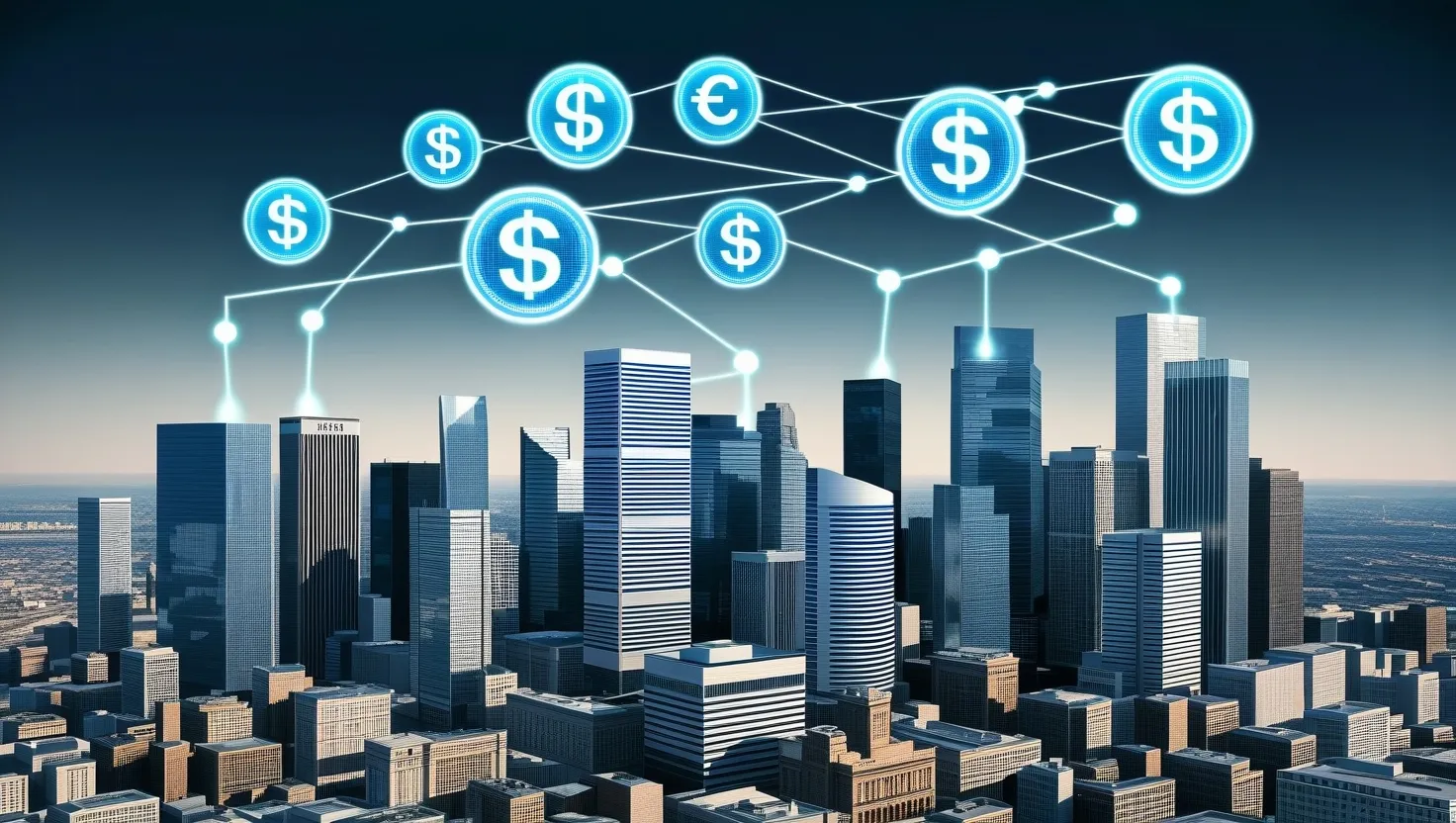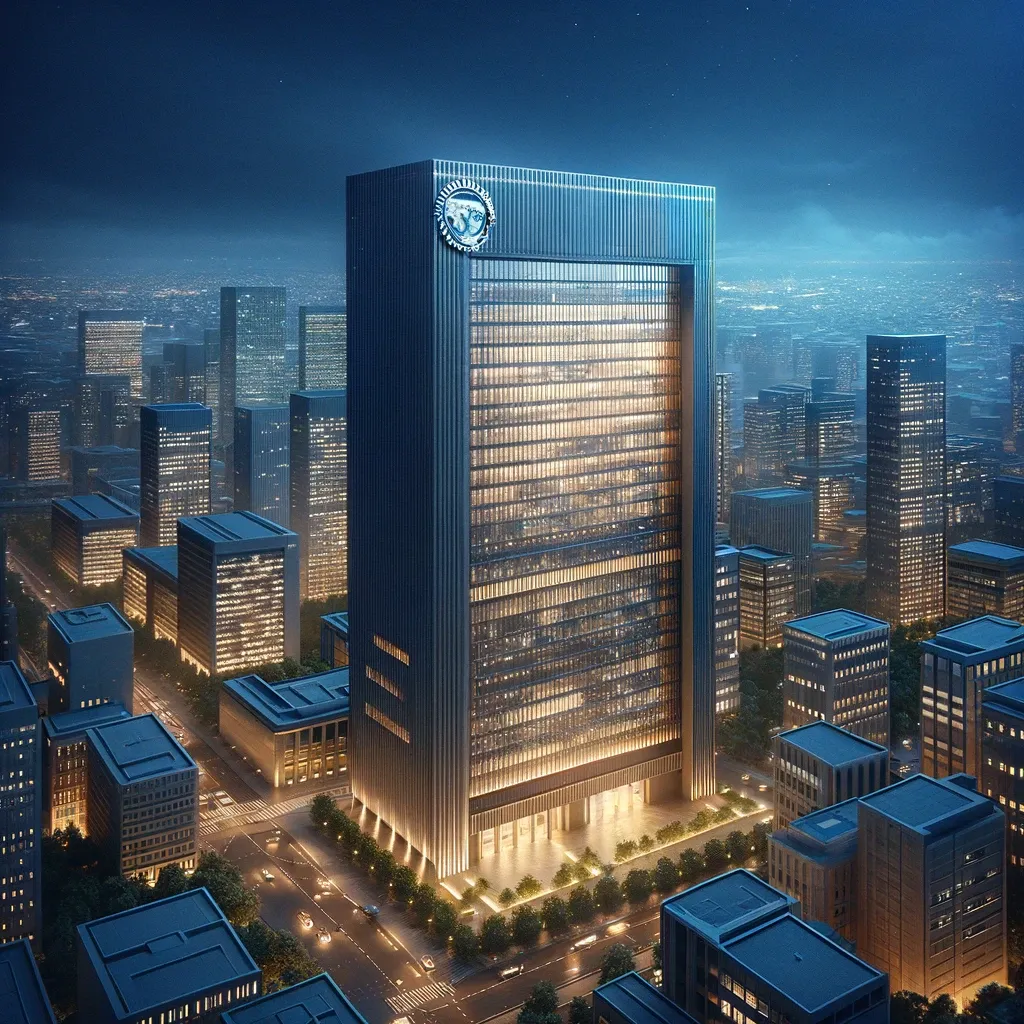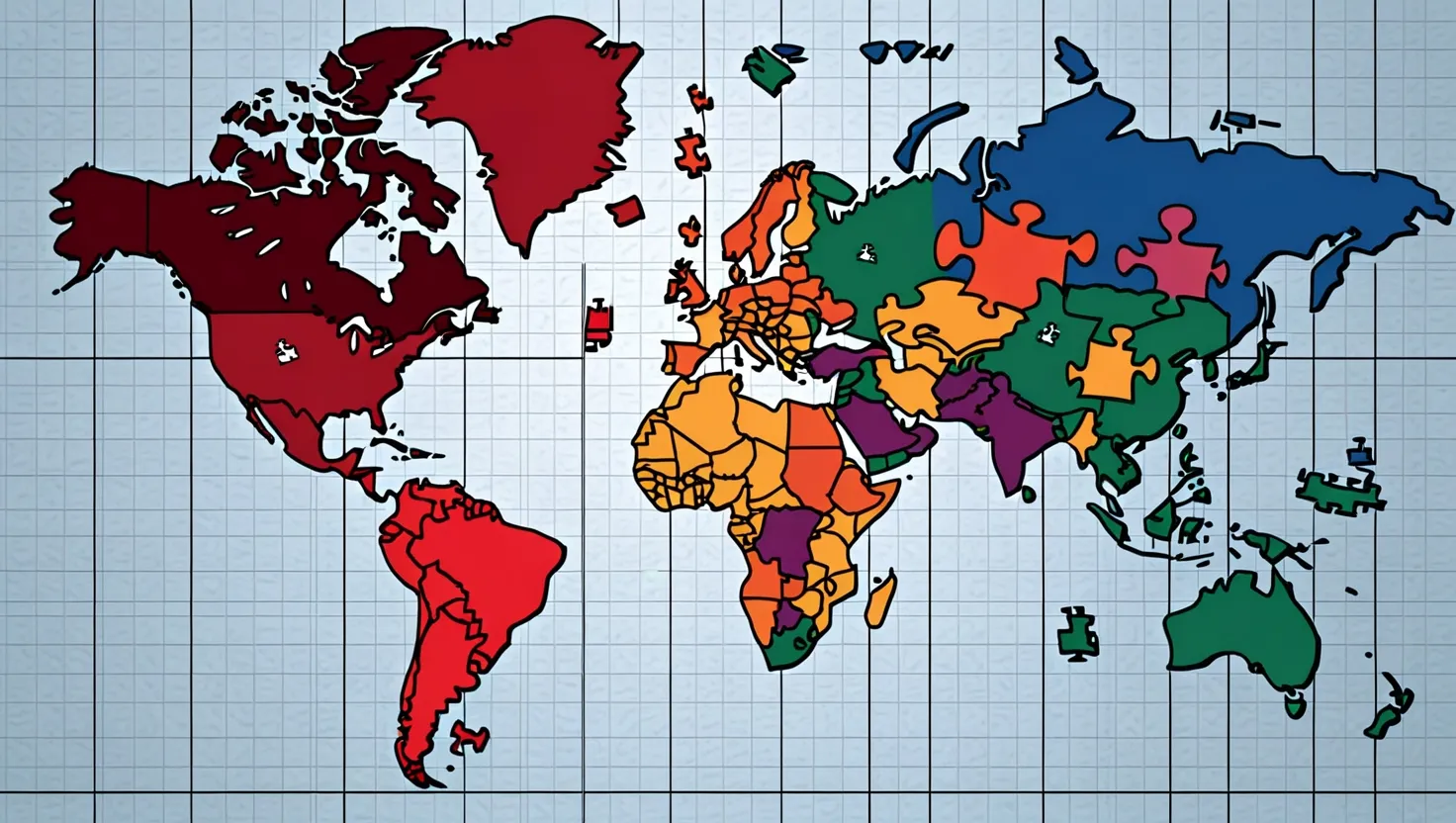The global trade landscape is undergoing a profound transformation, with new corridors emerging that are reshaping regional power dynamics in ways we’ve never seen before. These routes are not just lines on a map; they represent the arteries of commerce, diplomacy, and influence that are redefining how nations interact and compete on the world stage.
Let’s start with the China-Europe Railway Network, a modern incarnation of the ancient Silk Road that’s breathing new life into Eurasian connectivity. This network of rail links is shrinking the vast expanse between Asia and Europe, allowing goods to flow more quickly and efficiently than ever before. But it’s more than just a transportation route - it’s a statement of China’s growing economic might and its ambition to be at the center of global trade.
I recently spoke with a logistics manager who oversees shipments along this corridor. He told me, “Five years ago, the idea of regularly shipping electronics from Chengdu to Hamburg by rail seemed far-fetched. Now it’s routine. We’re seeing transit times cut in half compared to sea freight.”
This railway network is redrawing the economic map of Eurasia. Cities that were once backwaters are becoming bustling hubs of commerce. Places like Khorgos on the China-Kazakhstan border or Małaszewicze in Poland are now critical nodes in this new trade network. But with opportunity comes challenges. How will these rapid changes impact local communities? Will the benefits of increased trade be shared equitably?
“Trade is the natural enemy of all violent passions. There are two ages when charitable feelings develop rapidly in the human heart. They are the age of impotence and the age of ignorance.” - Alexis de Tocqueville
Moving south, we find another game-changing development: the African Continental Free Trade Area (AfCFTA). This ambitious project aims to create a single market for goods and services across the African continent, potentially transforming it into an economic powerhouse.
The AfCFTA is not just about reducing tariffs; it’s about creating entirely new economic flows within Africa. For too long, African nations have been more economically connected to their former colonial powers than to their neighbors. This is changing. New trade routes are emerging, linking West African ports to East African markets, and North African manufacturers to Southern African consumers.
A Ghanaian entrepreneur I met at a trade fair in Accra put it this way: “For the first time, I’m looking at the whole continent as my market. It’s exciting, but also daunting. We’re building business relationships that simply didn’t exist before.”
This shift has profound implications for global power dynamics. As intra-African trade grows, the continent’s dependence on external powers may decrease. But it also raises questions: How will this impact traditional trade relationships with Europe and China? Will increased economic integration lead to greater political unity among African nations?
Heading north, we encounter a corridor that’s as much a product of climate change as it is of human ambition: the Arctic Shipping Routes. As polar ice recedes, new shipping lanes are opening up, potentially revolutionizing maritime trade between Asia and Europe.
These routes could cut thousands of miles off traditional journeys through the Suez Canal. But they come with their own set of challenges and controversies. Environmental concerns are paramount, as increased shipping traffic could further damage fragile Arctic ecosystems. There are also geopolitical tensions, as nations vie for control over these new waterways and the resources beneath them.
A Russian official I spoke with was bullish on the prospects: “The Northern Sea Route will become the Suez of the 21st century,” he claimed. But an environmental activist had a different view: “We’re trading short-term economic gain for long-term ecological disaster.”
This raises a crucial question: How do we balance the economic potential of these new routes with our responsibility to protect one of the planet’s most vulnerable regions?
“The sea is the universal sewer.” - Jacques Yves Cousteau
In the vast expanse of the Indo-Pacific, a new economic framework is taking shape, one that could challenge China’s regional influence. The Indo-Pacific Economic Framework (IPEF) represents a strategic pivot by the United States and its allies to counter China’s growing economic clout in the region.
Unlike traditional trade agreements, the IPEF focuses on creating common standards in areas like digital trade, supply chain resilience, and clean energy. It’s an attempt to set the rules of the game for 21st-century commerce in one of the world’s most dynamic regions.
A Japanese diplomat I met at a conference in Singapore described it as “soft power economics.” He explained, “We’re not just talking about tariffs and quotas anymore. We’re shaping the very foundations of how trade will work in the future.”
But the IPEF is not without its critics. Some see it as too little, too late to counter China’s influence. Others worry that it lacks the teeth of a traditional trade agreement. Will it be enough to reshape economic relationships in the region? Or is it merely a symbolic gesture in the face of China’s economic juggernaut?
Moving westward, we encounter a series of corridors that are reshaping trade flows in the Middle East and Mediterranean. These routes, including the proposed India-Middle East-Europe Economic Corridor (IMEC), aim to bypass traditional chokepoints like the Suez Canal, offering new pathways for goods and energy to flow between Asia, the Middle East, and Europe.
These corridors are not just about moving goods more efficiently; they’re about creating new geopolitical realities. Countries like the UAE and Saudi Arabia are positioning themselves as key nodes in these new networks, leveraging their geographic position to become indispensable players in global trade.
An Emirati port executive I spoke with was enthusiastic about the prospects: “We’re not just building infrastructure; we’re building connections between civilizations,” he said. But a Turkish analyst had a more cautious take: “These new corridors could redraw the map of regional influence. We need to be careful about who benefits and who gets left behind.”
This raises important questions: How will these new corridors impact long-standing regional rivalries? Will they lead to greater cooperation or intensify competition?
“The great thing in this world is not so much where we stand, as in what direction we are moving.” - Oliver Wendell Holmes
Finally, we come to a corridor that exists not in the physical world, but in the realm of data: the Digital Silk Road. This initiative, part of China’s broader Belt and Road Initiative, aims to create a new infrastructure for the digital age, including fiber optic cables, 5G networks, and smart city technologies.
The Digital Silk Road has the potential to revolutionize cross-border data flows, reshaping everything from e-commerce to financial services. But it also raises concerns about data privacy, cybersecurity, and digital sovereignty.
A tech entrepreneur in Nairobi told me, “The Digital Silk Road could leapfrog Africa into the digital age. But we need to make sure we’re not just consumers of technology, but creators too.” Meanwhile, a European policymaker warned, “We’re at risk of a new form of digital colonialism if we’re not careful.”
This digital corridor forces us to grapple with some of the most pressing questions of our time: In an increasingly connected world, who controls the flow of data? How do we balance the benefits of digital integration with the need for national sovereignty and individual privacy?
As we survey these six corridors reshaping global trade, a few key themes emerge. First, we’re seeing a shift away from traditional East-West trade routes towards more diverse, multi-directional flows. This is creating new centers of economic gravity and challenging long-standing power dynamics.
Second, these corridors are blurring the lines between economics and geopolitics. Infrastructure investments along these routes are creating new dependencies and alliances, sometimes leading to concerns about debt and sovereignty.
Finally, these corridors are forcing us to rethink our understanding of geography itself. In a world of digital trade and changing climate patterns, traditional notions of distance and accessibility are being upended.
As we navigate this changing landscape, we must ask ourselves: How can we ensure that these new trade corridors lead to more equitable and sustainable forms of globalization? How do we balance the pursuit of economic efficiency with the need for resilience and diversity in our supply chains?
The answers to these questions will shape not just the future of global trade, but the future of our interconnected world. As we stand at this crossroads of commerce and geopolitics, the choices we make today will echo through generations to come.
“The new electronic interdependence recreates the world in the image of a global village.” - Marshall McLuhan
In this new global village, shaped by these emerging trade corridors, we have the opportunity to build bridges rather than walls, to create connections rather than divisions. But realizing this potential will require vision, cooperation, and a willingness to embrace change. The map of global trade is being redrawn before our eyes. The question is: what kind of world will we create with these new lines of connection?
